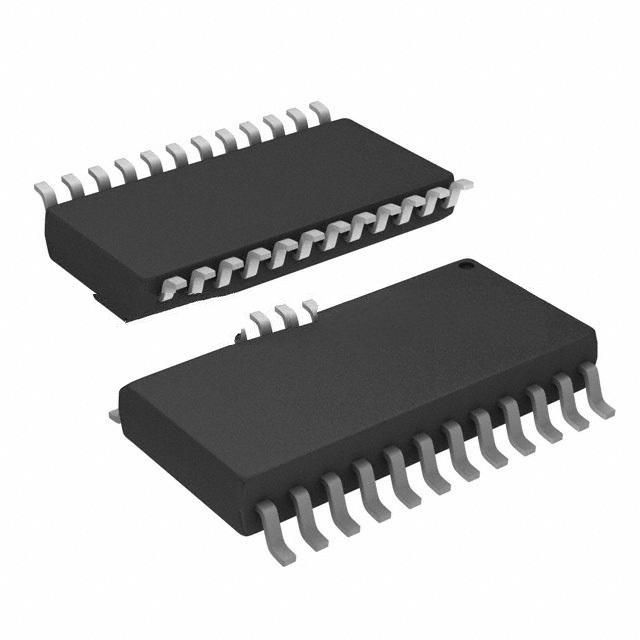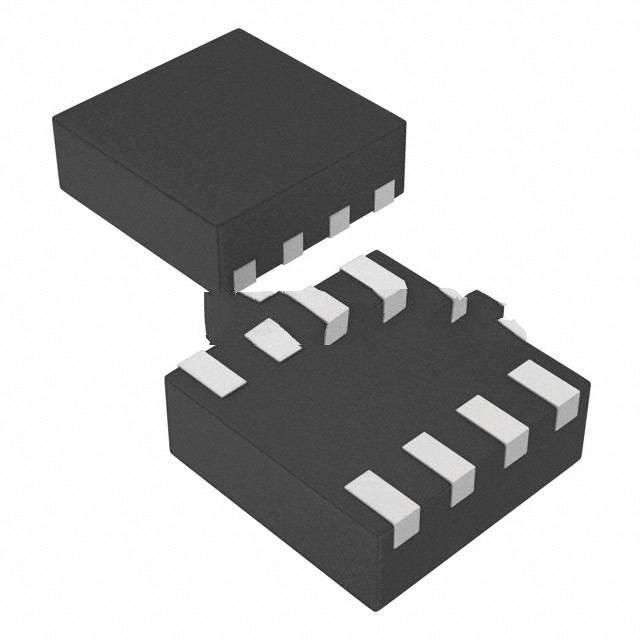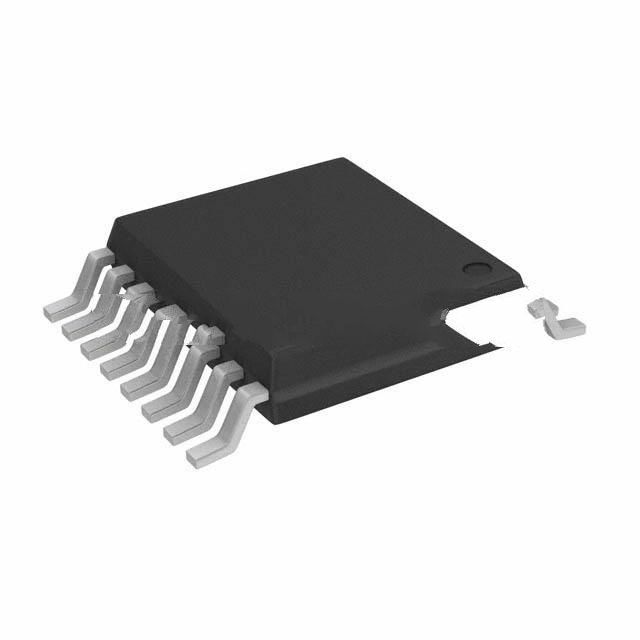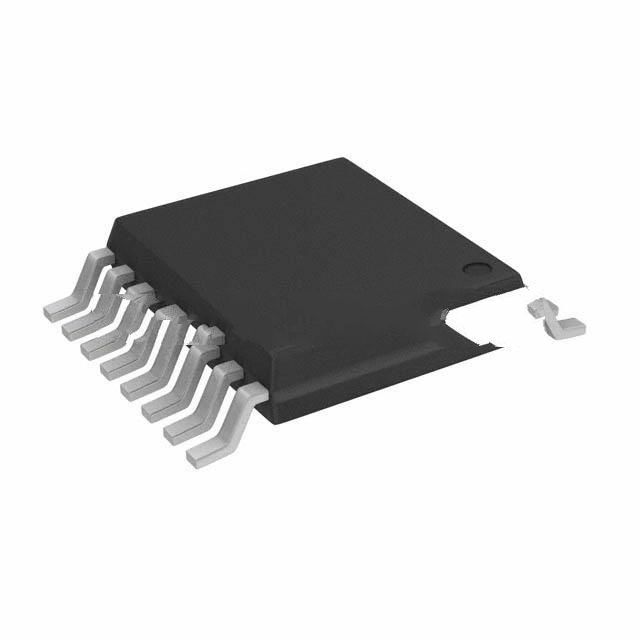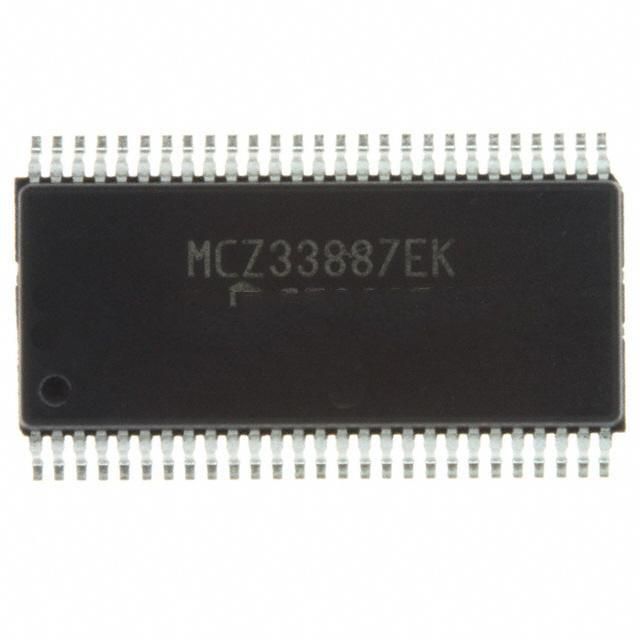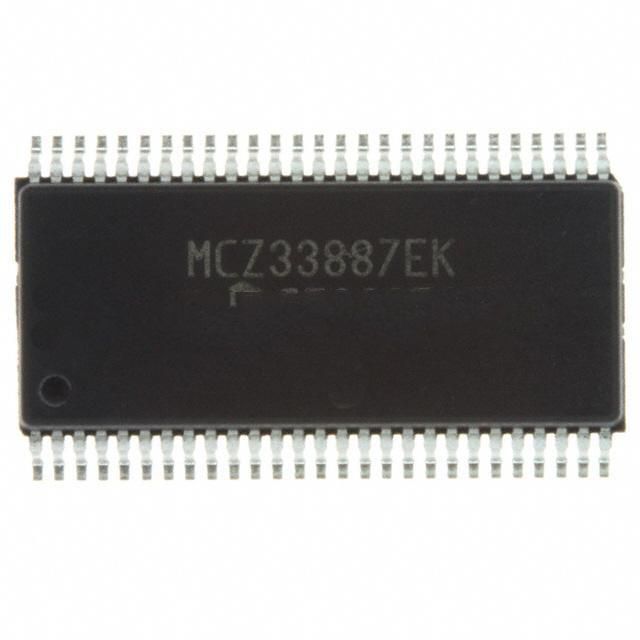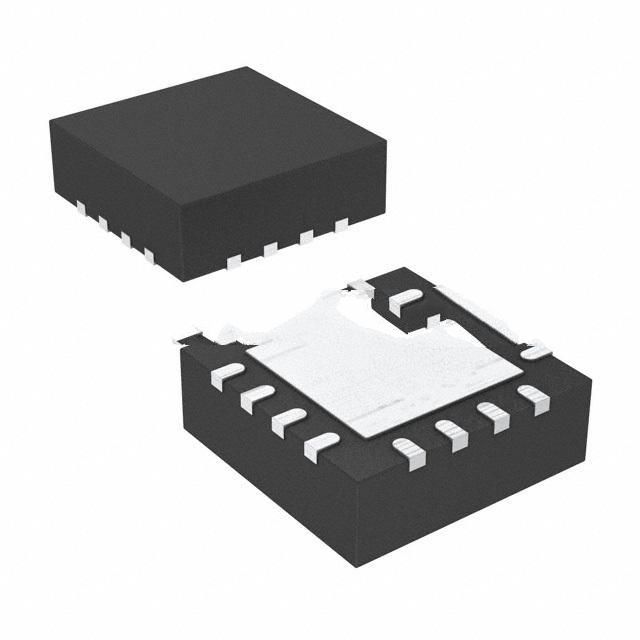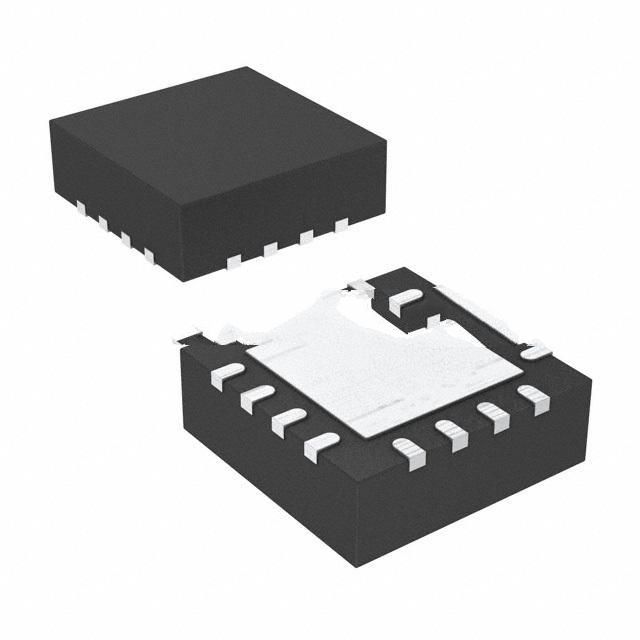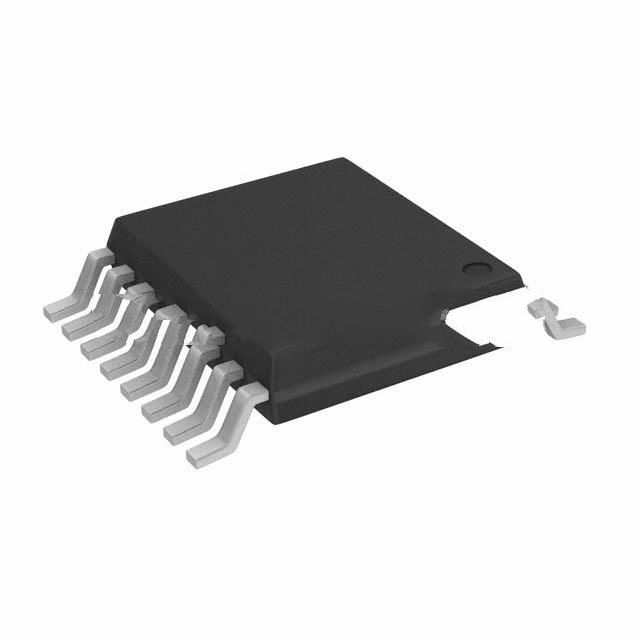Key electronic technologies and IC (integrated circuit) applications for self-driving cars
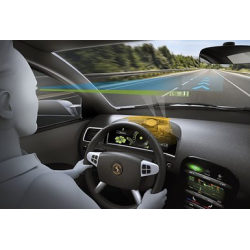
Key electronic technologies and IC (integrated circuit) applications for self-driving cars
A self-driving car, also known as a self-driving vehicle or driverless car, is a car that can perform driving tasks automatically without human intervention.
It is a complex technology involving artificial intelligence, sensor technology, computer vision, machine learning and advanced control systems.
The key electronic technologies of self-driving cars include the following main aspects:
Sensor technology: Self-driving cars need to have the ability to perceive the environment, which needs to rely on various sensors, such as LiDAR (LiDAR), radar, camera, etc.
The information gathered by these sensors is used to detect and track objects, build environmental models, navigate, and make decisions.
Computer Vision: Computer vision is a technology that enables machines to "see" and understand their environment. Using cameras and algorithms,
self-driving cars can recognize pedestrians, vehicles, traffic signals, road markings, and more.
Deep learning and artificial intelligence (AI): This technology enables cars to learn and understand driving behavior through complex network structures. AI chips are the key here,
such as NVIDIA's Drive AGX, Google's Tensor Processing Unit (TPU), and Intel's Movidius Myriad chips.
Decision-making and path planning: After sensing and understanding the environment, self-driving cars need to make decisions and path planning.
This includes anticipating the behavior of other road users,determining the vehicle's travel path, deciding when to speed up or slow down, and more.
Vehicle Control Systems: This includes braking systems, steering systems, acceleration systems, etc. All of this needs to be precisely controlled by an electronic control unit (ECU).
Positioning and Mapping Technologies: Self-driving cars typically use high-precision maps and positioning technologies such as the Global Positioning System (GPS).
Existing positioning chips such as Broadcom's BCM47755 can provide accurate positioning information.
Vehicle-to-vehicle communication technology (V2X): Vehicle-to-vehicle (V2V), infrastructure (V2I) and pedestrian (V2P) communication is very important.
This requires advanced communication technologies such as 5G and Wi-Fi 6.
Safety and protection systems: In addition to physical safety, self-driving cars also need to consider network safety. Because the operation of self-driving cars depends on a large amount of data exchange,
strict protection measures and systems are required for problems such as hacker attacks and data leakage.
All of the above technologies need to rely on powerful computing capabilities, especially AI chips and positioning chips, which are the basis for self-driving cars to realize their functions.
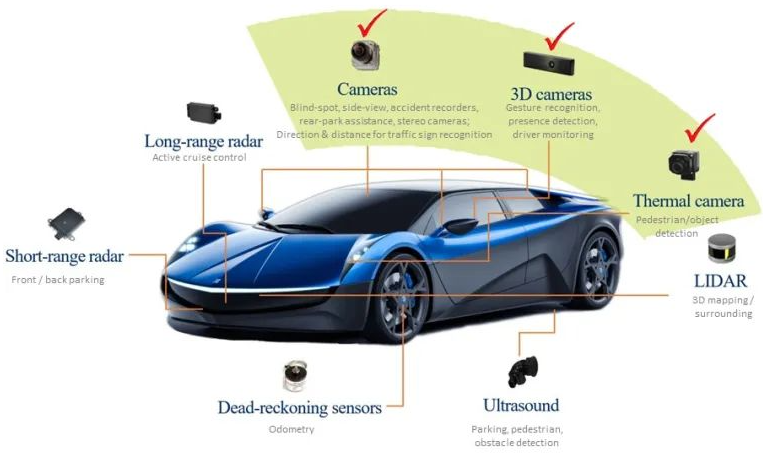
Self-driving cars use those types of ICs (integrated circuits):
A self-driving car is a high-tech product that integrates a large number of complex systems and technologies.
In these systems, IC ( Integrated Circuit ) chips play a key role. Some types of IC chips used in self-driving cars include:
Microprocessors (Microprocessors): They are the core of the automatic driving system, responsible for processing data input from various sensors and systems,
and executing various control instructions.These microprocessors need to have high performance and high speed, and be able to process large amounts of data in real time.
For example,
- Nvidia Drive AGX Pegasus: This chip contains two Nvidia Xavier SoCs and two latest Nvidia Turing GPUs, designed to handle the advanced processing tasks of autonomous vehicles.
-Tesla FSD (Full Self-Driving) Chip: Tesla's fully automatic driving chip has good performance in processing vision and sensor data related to automatic driving.
-Mobileye EyeQ5: The EyeQ family of microprocessors made by Israeli company Mobileye is a core component of many automotive self-driving systems.
-NXP S32 Automotive Processing Platform: This product is mainly used in ADAS and automatic driving systems,and supports multiple cores to perform high-performance computing at the same time.
-Intel Atom Automotive SoCs: This automotive-specific SoC from Intel is mainly used in in-vehicle infotainment systems and advanced driver assistance systems.
-Qualcomm Snapdragon Ride Platform: Qualcomm's autonomous driving platform includes a series of SoCs and accelerators, suitable for L2 to L4 level autonomous driving systems.
-Texas Instruments TDAx ADAS SoCs: This SoC from Texas Instruments is mainly used in front-facing cameras, radar and LiDAR systems for autonomous driving.
-Renesas R-Car SoCs: This microprocessor is mainly used to process vision and sensor data in autonomous driving systems.
-Xilinx Zynq UltraScale+ MPSoC: This product is a high-performance programmable SoC widely used in autonomous driving systems.
-Bosch IC Automotive Electronic Control Units (ECUs): This chip is often used to control various electronic devices in the car, such as electronic stability program (ESP) and so on.
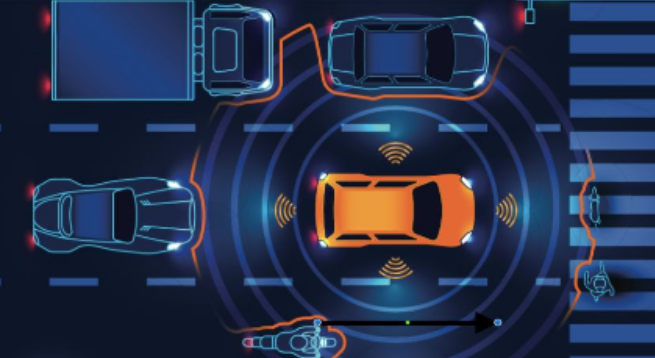
Memory chips (Memory Chips): including RAM (random access memory) and Flash memory. These memory chips are used to store programs, system data, and temporary data.
Sensor Chips (Sensor Chips): Self-driving cars need to use various sensors to perceive the surrounding environment,
Example - LiDAR sensor: Velodyne HDL-64E
-Radar sensor: Delphi ESR 2.5
-Camera: Mobileye EyeQ4
-Ultrasonic sensor: Bosch ParkPilot URF7
-IMU (Inertial Measurement Unit) sensor: Bosch SMI130
-GPS: u-blox NEO-M8N
-Electronic compass: STMicroelectronics LSM303C
-Car speed sensor: Bosch DAS1000
-Temperature and humidity sensor: Bosch BME280
- Gyro sensor: Bosch BMI160 etc. These sensors all require specialized IC chips to process their signals.
Communication Chips: including WiFi, Bluetooth, LTE, 5G, etc. These chips are used for communication between vehicles (V2V), communication between vehicles and infrastructure (V2I), and communication between vehicles and cloud services.
Power and Motor Control ICs (Power and Motor Control ICs): These chips are used to control the battery management system (BMS) and IGBT device of electric vehicles.
Safety-related ICs (Safety-related ICs): including MCUs for functional safety (Functional Safety), and security ICs for encryption and secure communication.
Artificial intelligence (AI) chips: These chips are used to execute deep learning and machine learning algorithms for functions such as image recognition,
speech recognition and decision making.These are some of the types of IC chips that may be used in self-driving cars. It should be noted that with the development of technology,
new IC chips and technologies may appear and be applied in self-driving cars.
The practical significance and application value of self-driving cars are mainly reflected in the following aspects:
Safety: Many traffic accidents are due to human error, including drunk driving, drowsy driving, and distracted driving. By removing these human elements, self-driving cars could greatly improve road safety.
Efficiency: Self-driving cars can improve energy efficiency by more precisely controlling speed and distance, reducing unnecessary braking and acceleration. In addition,
they save time by optimizing routes and avoiding congestion.
Convenience: Self-driving cars can allow passengers to do what they want while on the road, such as reading, working or resting. It also opens up more mobility options for those unable or unwilling to drive,
such as the elderly, the visually impaired and children.
Environmental friendliness: Self-driving vehicles are generally combined with electric vehicles, which can reduce fossil fuel consumption and greenhouse gas emissions, and are more environmentally friendly.
Sharing economy: The emergence of self-driving cars may make shared travel mainstream, thereby reducing the number of private cars,
which is of great help in solving urban congestion and environmental protection problems.Overall, self-driving cars have the potential to have a profound impact on society,
including changing traffic rules, urban design, mobility patterns, and energy consumption.
However, this will also bring a series of challenges, such as how to ensure the safety of self-driving cars, how to deal with the legal and ethical issues raised by self-driving cars, and how to deal with the impact that self-driving cars may have on the job market.
edit author:

Jinftry(Hong Kong registered company name: JING FU CAI (HONGKONG) INTERNATIONAL CO., LIMITED) was established in 2013, headquartered in Hong Kong, China, with a branch in Shenzhen, China. It is a global supplier of electronic components and a well-known and competitive electronic product distributor in Asia. Is also an excellent strategic partner of global ODM/OEM/EMS, able to quickly find authentic and traceable electronic components for customers to purchase.

